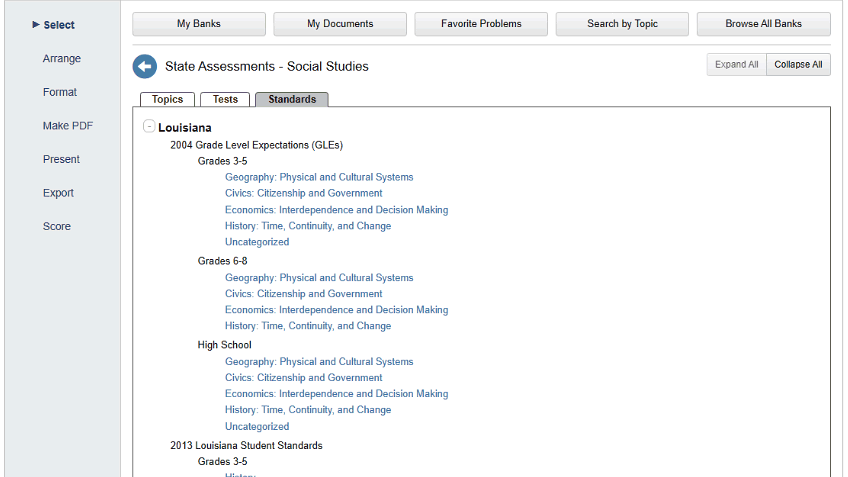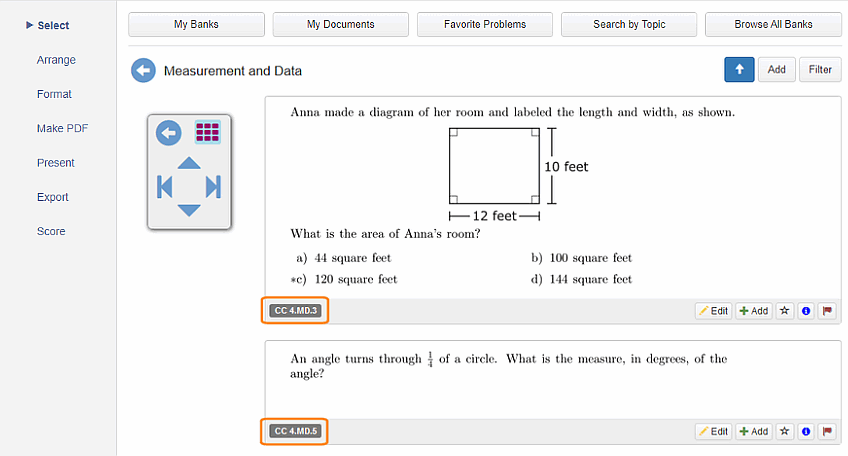State Assessments organized by standard
If you’ve logged in to Problem-Attic and used the State Assessments database, you may recall seeing two tabs: “Topics” and “Tests”. Now there is a third tab labeled “Standards”.
So far we’ve organized five states’ assessment questions by standard: Louisiana, Massachusetts, Mississippi, Ohio, and Pennsylvania. We started with them because they’ve released the most questions, almost 22,000! Ten more states will be added soon.
To see how the questions are organized by standard, click the State Assessments link on the top-left panel (main Select page). Then click the Standards tab and a subject: Mathematics, Science, or Social Studies. Click the plus button next to one of the states, or click the Expand All button near the top of the page.
Here is a screenshot which shows the standards organization for Louisiana Social Studies:

There are two things you may notice about the standards. First, for most states and subjects there is more than one “framework”. Because Problem-Attic’s database includes 10+ years of released questions, there is typically an older framework from about 2001--2004 and a newer framework from 2011--2014. Roughly speaking these coincide with the federal education laws called NCLB and ESSA, or the introduction of Common Core State Standards.
Second, to prevent excessive “drill down”, we’ve divided questions only by domain or major topic. However, you can still see the individual standards. When you click a domain or topic, you’ll see a coded objective on each problem thumbnail. These are editable after you add problems to your document, and they appear on the answer key. (To edit objectives, go to the Arrange page, click a problem, then click the Details button.)
Here is a screenshot showing coded objectives for the Massachusetts 2011 mathematics framework:

One last note: within a domain or topic, questions are sorted chronologically, from oldest to newest. To reverse the order, you can click the Up/Down blue arrow near the top of a selection page. For other ways of making selection easier, please see this shortcuts page.